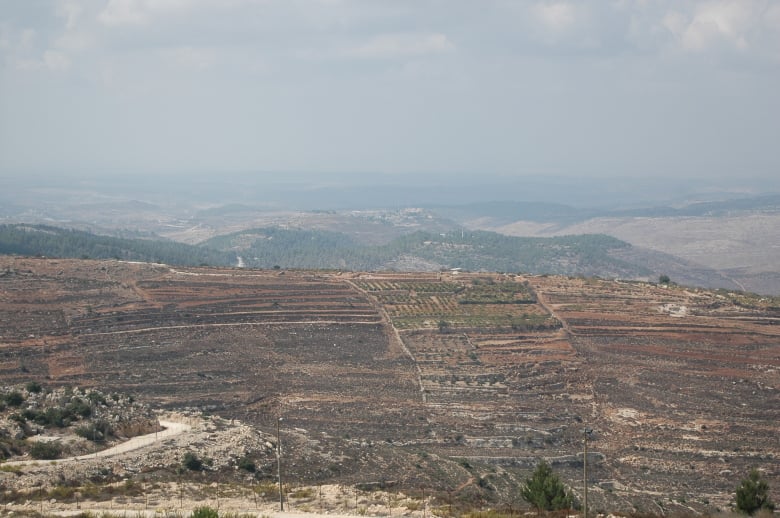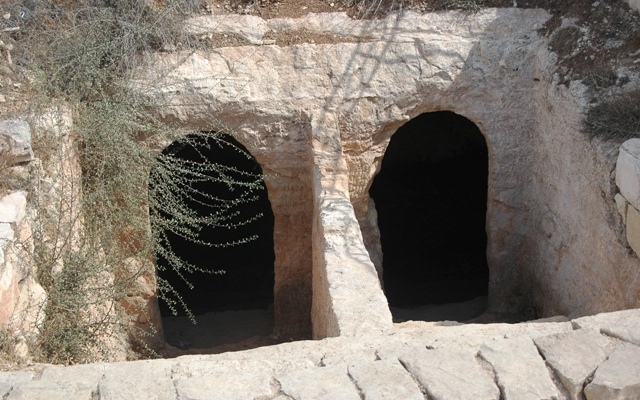
A strip of road in Judea and Samaria serves as a timeline for ancient Jewish history.
Today’s modern Route 60, which runs through Judea and Samaria, from north to south, had served as the main travel and commerce road between Hebron and Shechem in biblical times and throughout many historical periods.
This was probably the route that Abraham, Isaac and Jacob would have walked upon when traveling between Be’er Sheva, Hebron, Har HaMoriah, Beit El and Shechem.
Multi-Layered History
Derech Ha’Avot (Footsteps of the Patriarchs) is a short segment of this route, and properly exhibits the multi-layered history of this essential path.
In Gush Etzion, near Alon Shvut, one can find Second Temple Era and Roman Era artifacts situated along the path.
Walking along, one encounters an ancient mikvah (Jewish ritual bath), used 2,000 years ago by people on a pilgrimage to Jerusalem. They would immerse themselves and go through a purification process before ascending to Jerusalem and offering their sacrifices at the Holy Temple.
A pilgrim would descend on the right, immerse himself, and ascend on the left, so that the purified would not be defiled by those who had not yet immersed.
Similar structures are found near the Temple Mount in Jerusalem. The Mishnah (first major work of Rabbinic Judaism), from around the 4th century CE, describes the procedure: “All vessels found in Jerusalem on the path leading down to the house of immersion are assumed to be defiled but those found on the way up are deemed pure. For there were two paths and the path used by those defiled leading down to the mikvah was not the same path leading up used by those who immersed.” (Shekalim 8:2).
A major battle was fought in 162 BCE between the Jewish Hasmonian rebels and the Greek occupational forces in the vicinity of Beit Zachariah, which is located along the route. The modern community of Elazar is named after one of the fighters who died in battle while leading the forces against the Greek elephants.
Moving on in history, a Roman milestone from the 2nd century CE marks the distance to the next city.

A view of the coast from Mitzpeh Ha’Elef. (Photo: Aryeh Savir/UWI)
The path continues to ascend towards Jerusalem, culminating at a point called Mitzpeh Ha’Elef (the observation point of the one thousand), named after its height of 1,000 meters (3280 ft.). There, one has a commanding view of a large part of Israel and can see all across Jerusalem, down to the coast and into the Judean Desert. On a clear day, the view is visible all the way down to the Gaza Strip.
Nowadays, Gush Etzion is populated by modern Israeli communities of people who returned to dwell in the land of their forefathers after the Six Day War, when Israel liberated Jerusalem, Judea and Samaria.
Author: Aryeh Savir
Staff Writer, United with Israel

Free Ebook: 10 Best Places to Visit in Israel
The Land of Israel has provided the backdrop for some of the most important events in human history. From the Old City in Jerusalem to the Sea of Galilee, people from all over the globe visit the Holy Land each year to take in the breathtaking scenery and inspiration of Israel. Now you can experience this beauty for yourself from the comforts of home and maybe plan a trip of your own to Israel. Get the free, exclusive eBook from United with Israel: The 10 Best Places to Visit in Israel.
